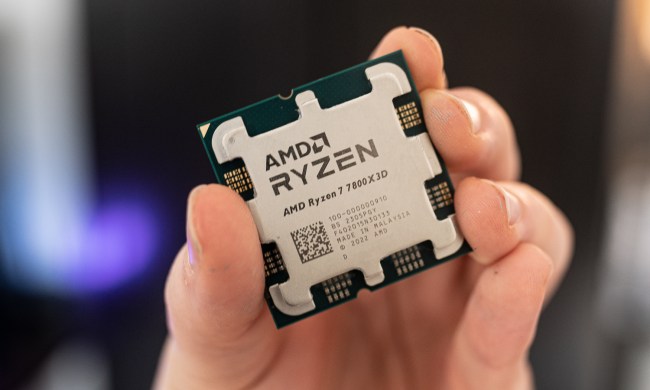How about this? When you unlock your front door, the lights in the foyer come on, the motion sensors on your alarm system turn off, the thermostat starts the air conditioning, and your entertainment system begins playing your favorite music—all before you put your keys down!
Now that’s home automation, right?
What about a more serious, or potentially life-and-death scenario, where hospital staff could track patients, staff members, and equipment from any console, PC, or tablet on the premises?
While the best Wi-Fi systems allow us to take baby steps into building automation, wireless security, asset tracking, and more, a new technology called Bluetooth Mesh — an update to the standard Bluetooth wireless solution that most of us know — promises a better, more efficient, and much less expensive solution.
“People won’t put up with flaky Wi-Fi anymore.”
“As people’s expectations for networks go up, they demand networks capable of handling hundreds (or thousands) of IP addresses, offering Wi-Fi-level of signal performance across the house and building,” Daniel Cooley, Senior Vice President of Silicon Labs, told Digital Trends. “People won’t put up with flaky Wi-Fi anymore. If they can get away with fewer antennas, it would be much better.”
Cooley is a member of the Bluetooth Special Interest Group, or SIG, which oversees and develops Bluetooth technology. If he’s right—and industry watchers and makers of networking equipment are betting that he is—many aspects of our lives will soon be secured and simplified by this latest Bluetooth update.
Not your father’s Bluetooth
Traditional wireless networks, including one-to-one Bluetooth networks, are limited by distance between the two devices communicating. Wi-Fi makes that worse with an additional impediment—relatively high-power requirements. It’s difficult to make a Wi-Fi signal extend more than a few hundred feet without a massive antenna and large power supply.
Bluetooth Mesh devices find a clever way to fix that. They connect to each other, and pass signals to peers that are within range, forming a web, or mesh, of interconnected devices capable of relaying data. This means that information is passed from one device to another, and another, and so on.

This “managed flood” approach to data transmission, according to the Bluetooth SIG, “is uniquely suited for low-power wireless mesh networks, especially those handling a significant amount of multicast traffic.”
“Multicast” is a form of network communication where a single sender broadcasts to multiple receivers. In a “flood network,” every device in the chain, or mesh, is multicasting to every device within its range, and so on. That creates a reliable network without the need for massive power draw or a big, beefy antennas.
How Bluetooth Mesh works
An important component of the Bluetooth protocol is its Generic Access Profile, or GAP, which controls how Bluetooth devices scan, broadcast, and connect to their peers. Until Bluetooth Mesh, GAP had a typical parent-child network relationship, where the parent did all the routing, and the child performed its allotted task. That’s what happens when you connect a Bluetooth keyboard to your tablet, for example.
Bluetooth mesh will work hand-in-hand with Wi-Fi, with the latter continuing to serve high-bandwidth needs.
Starting with Bluetooth 4.1, GAP broadened its networking abilities. Bluetooth devices gained the ability to play the roles of both parent and child, giving all devices the ability to connect and broadcast to any peer directly. This worked with all devices in their transmission range, as well as devices out of range. The ability to connect directly or indirectly with any number of mesh-capable devices allows for the construction of elaborate mesh networks consisting of many devices over several miles. If every device in the network is within broadcast range of at least one other device, the mesh network can cover potentially unlimited distances.
The lower power requirements and small size of individual Bluetooth devices in the mesh makes it possible to tuck them away in other devices. For example, they could piggyback on lighting systems.
“Within the building automation market, there is a growing focus on connected lighting and the role it can play as a platform for providing automation services throughout a facility,” said Szymon Slupik, President and CTO of Silvair, a company that builds Bluetooth Mesh lighting components (including mesh lightbulbs). “A smart lighting platform built on top of Bluetooth mesh networking can also support asset tracking, point of interest, and way-finding services.”

Bluetooth Mesh networks are not only low-power, but they’re also low-bandwidth. That might sound like a problem, but it’s not. A Bluetooth Mesh network is aimed to move data that maintains connectivity or sends commands. Sending a “turn off” or “turn on” command doesn’t require much bandwidth. That’s why Mesh isn’t being pitched as a full Wi-Fi replacement. It’s similar from a distance, but on close inspection, it fits a different niche.
When it comes to home-mesh networking, though, Bluetooth is not the only game in town, and for some applications there are probably better fits. Linksys, for example, has released its own mesh networking products for high-speed data transfers based on Wi-Fi. Why?
According to Justin Doucette, Senior Director of Product Management at Linksys, “If you are paying for 100 Mbps from your Internet service provider, then you want to get all that speed in every corner of your house.” This means Mesh will work hand-in-hand with Wi-Fi, with the latter continuing to serve high-bandwidth needs.
A world with or without Mesh networks
Often, protocols and their subsequent solutions have a potential to change the world, or at least parts of it. And while there’s no way to predict that Bluetooth Mesh will have as big an influence as we suspect, it seems that this new protocol has far-reaching potential.
Bluetooth is already a vastly deployed, trusted protocol, with a lot of goodwill behind it. If all goes well, and it works as it is said to, we’re in for a drastic change in network technology, and what it can do.


